The running shoe, explained
Confused by running shoe jargon? Use this guide the next time you're shopping for a new pair
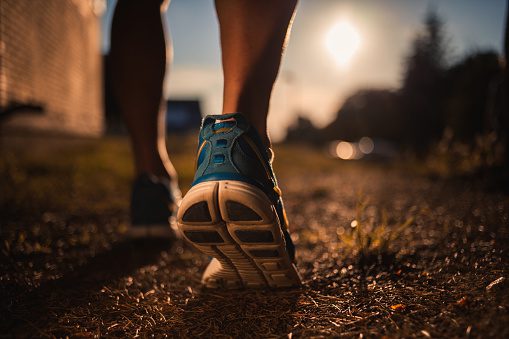
Shopping for a new pair of running shoes can often feel like a hassle. It should be simple (pick a pair you like that’s the right price, buy it and move on with your life), but as you start to look into your options you’re hit with an onslaught of technical terms, multiple different and often opposite opinions (should you have a minimalist shoe or one with cushioning?) and so many options that you’re tempted to give up and go barefoot. We know running shoes can be complicated, so we’ve made this handy guide explaining all the jargon to help you cut through the noise and find the perfect pair for you.
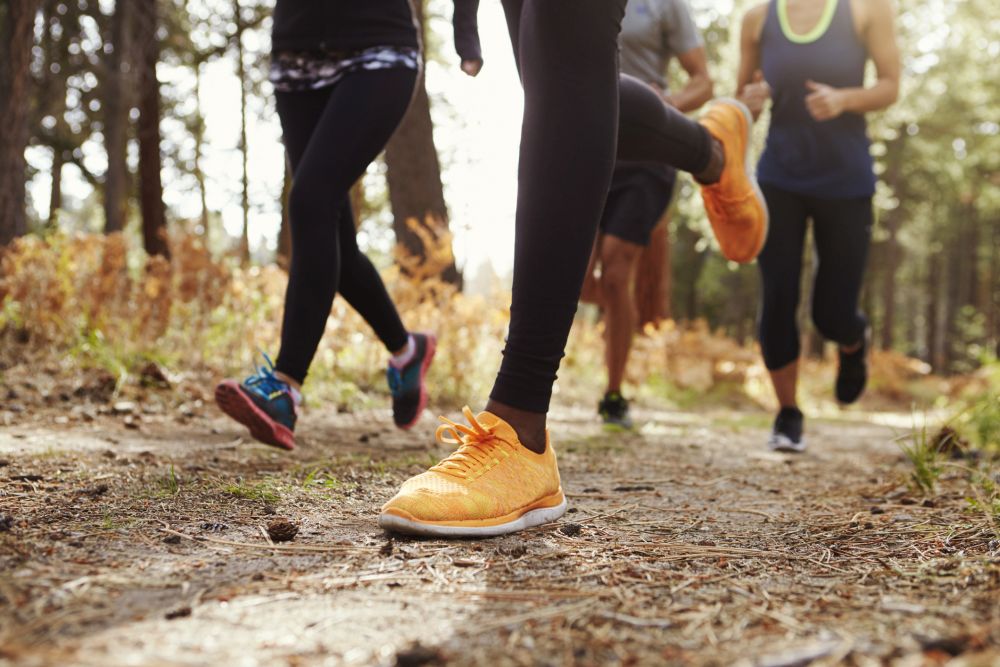
RELATED: How often should you replace your running shoes?
Stack height
This refers to the amount of material between your foot and the ground. They can range from minimal cushioning (a barefoot feel) to maximal, or highly-cushioned for a plusher landing. Most running shoes fall somewhere in the middle, and the level of stack height in your shoe is a matter of personal preference. Most runners prefer a medium stack height because they tend to be versatile for pretty much any type of run (easy runs, long runs and speedwork). If you are a beginner, this is a great shoe to start with.
Some people prefer a minimal or low stack height, and this is usually because they prefer a more natural running experience, where they can feel the ground rather than the cushioning. Some say that with less cushioning to absorb impact, runners can adopt a more natural gait and their foot muscles will get stronger so they become better at minimizing impact and injury. On the opposite end of the spectrum, people who prefer a high stack height enjoy maximal cushioning, which provides a cushier running experience and a higher level of impact protection.

Heel drop
Heel drop (also called heel offset) refers to the difference in height between the heel of the shoe and the toe. A higher heel drop means there is a steeper angle between your heel and your forefoot. When you’re in your bare feet, your heel and your forefoot touch the ground at the same time, making the heel drop zero. By contrast, when you’re wearing high heels, the heel drop is much steeper and could be a few inches, depending on the height of the heel. Unlike stack height, heel drop is about more than just preference, and it is important to find a shoe with a drop that is appropriate for your stride to avoid injuries.
RELATED: British Adventurer Anna McNuff: Inspiring thousands by running 100 barefoot marathons
For example, if you tend to strike with your heel first, you’re better off choosing a shoe with a heel drop of more than six millimetres. If your forefoot or midfoot tends to strike the ground first, a heel drop of less than six millimetres is a better option for you. If you’re unsure what your running stride looks like, your best bet is to head to a running store with a knowledgeable staff who can asses your stride and help you find the right pair for you.
Pronation control
Many shoes are made with stabilizing features such as medial posts, dual-density foams, varus wedges, guide rails and wider shoe geometries, that are meant to keep the foot from unwanted motion, such as over-pronation or rolling inwards. Most people don’t actually need pronation control and should instead look for a shoe that provides stability as support, not control. Again, a proper gait analysis can help you determine what is best for you.
Upper
This refers to everything above the sole. It’s the fabric part of the shoe that secures it to your foot.
Ankle collar
Sometimes called the heel collar, the ankle collar is the wrap at the opening of the shoe that keeps your heel in place. If your shoe has a properly-fitted collar, your heel should not slip around and the and the curve on the back should be comfortable and not irritate your Achilles tendon.
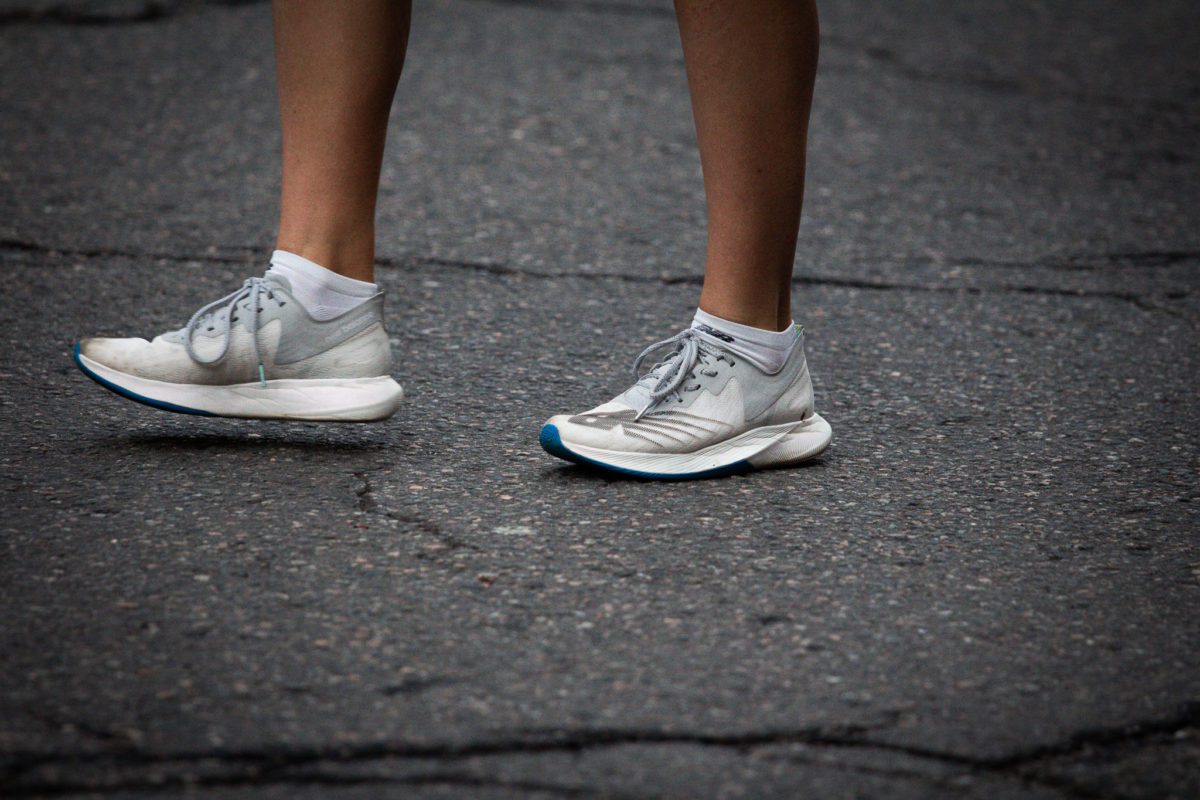
Heel counter
This is the cup that cradles and supports your heel at the rear of your shoe. It is usually semi-rigid, and while they don’t provide motion control, they do help centre the heel for stable landings. Many minimalist shoes have eliminated this component altogether for more freedom of movement.
Saddle
The saddle is the reinforced mesh that works with the eyelets and laces to tightly wrap the mid-foot and support your foot’s arch. It should be snug to keep your foot from sliding around inside the shoe, which can lead to blisters.
Toe box
This is the forward tip of the upper part of your shoe from the front of the eyelets to the toe that provides space and protection for your toes. It should allow your foot to flex and spread out naturally as you land in both width and length without rubbing on your toes.
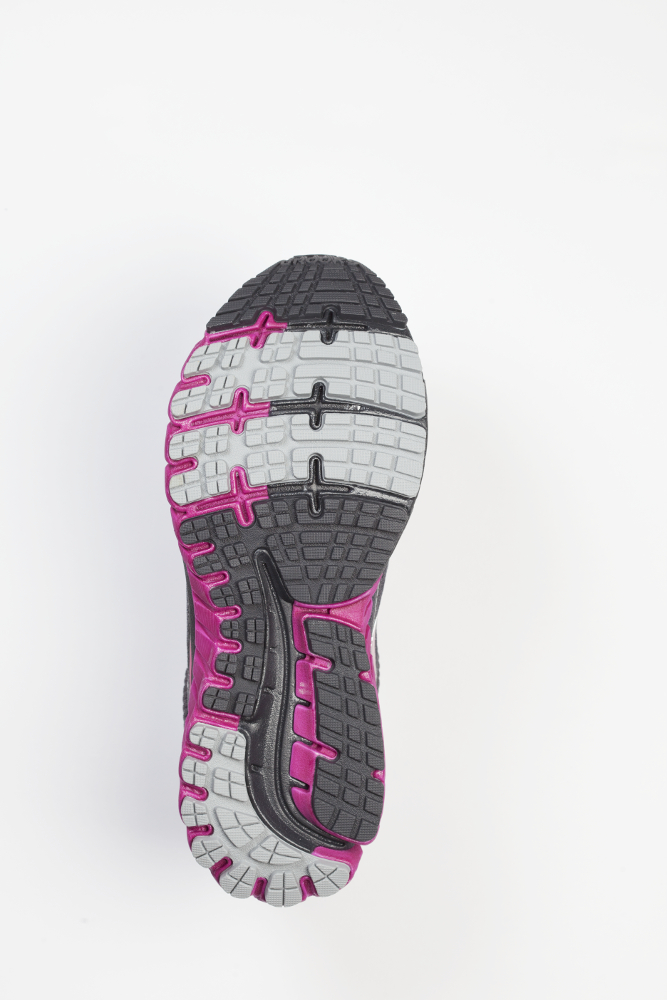
Outsole
The outsole is the bottom of the shoe that makes contact with the ground. It can be made of a variety of rubbers and foams to make the shoe more resident to wear and tear or to increase flexibility and bounce.
Toe spring
Most running shoes have grooves that run across the bottom of the ball of the foot to allow the shoe to bend the way your foot does. The toe spring refers the end of the shoe where the toe turns up, creating a rocker pattern that allows your foot to roll through your stride. Even just small changes to the toe spring can change the way the shoe feels, and the optimal degree of flex depends on how fast you’re going to be running (i.e.- are you training for an 800m, a 5K or a marathon?).
Midsole
This is the foam material between the outsole and the upper that cushions your foot as you run, guides the foot through the stride and protects you from impact forces.
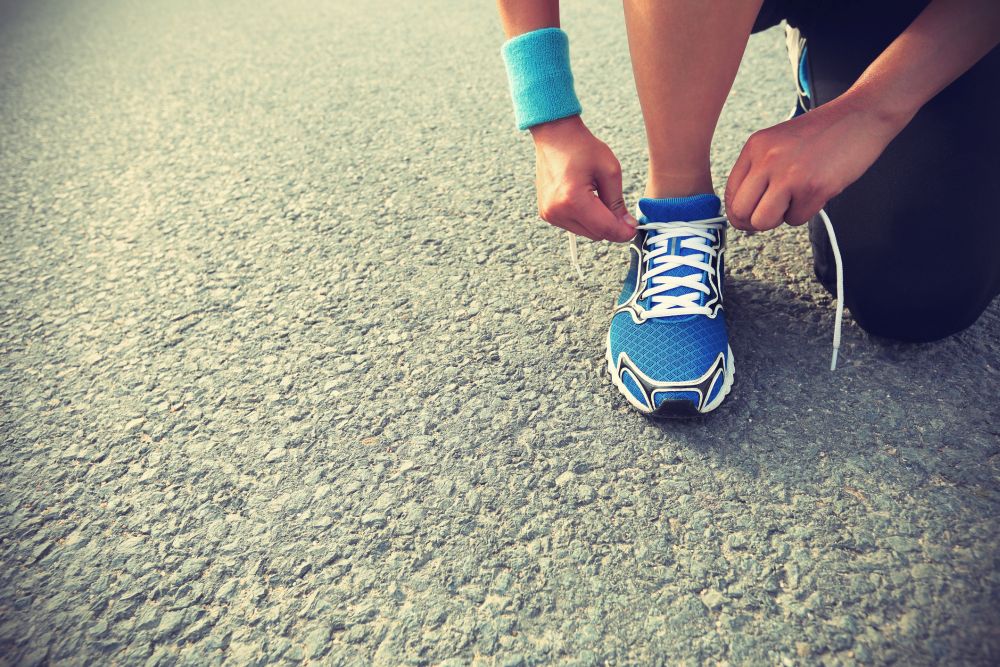
Cushioning
You will see cushioning discussed in two main areas — the heel and the forefoot. In the heel area, some shoes offer a crash pad area on the outside edge of the foot that helps to make your landing smoother, but heel cushioning is mostly a matter of personal preferences, rather than impact protection. In the forefoot, cushioning can protect the structures in your foot, and new materials and designs promise to protect and propel your foot, helping you to run more efficiently and faster.
Sock liner
The sock liner is the removable lining on the inside of the shoe, usually made of foam to cushion the bottom of your foot. It provides most of the arch support, and is the first thing you’ll notice when deciding how comfortable a shoe is when you first put your foot in it.
Shopping for running shoes can be overwhelming, even for the most experienced runner. Refer to this guide the next time you’re researching for your newest pair, and if you’re still stuck, reach out to your local running store — the staff there will be able to help you find the perfect shoe based on your running level, goals and stride mechanics.


